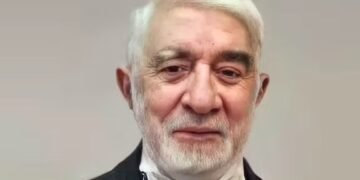“Editor-in-Chief: SHAPOUR-T”
In a country where every collective movement is typically met with suppression, arrests, and an uncertain fate, the nationwide truck drivers’ strike in Iran is strangely unfolding not under the shadow of silence, but in full visibility — echoed across social media, opposition platforms, and even segments of domestic press.
Although the strike appears to revolve around practical demands like fair freight rates, insurance coverage, spare parts, and fuel prices, it has quietly morphed into a psychological and media maneuver — a phenomenon that, intriguingly, serves both the regime and its critics.
But amid all the noise, one key question is being drowned out:
What is happening in parallel that must not be seen?
The answer lies buried in short, vague lines from American outlets like Axios and The Wall Street Journal: Backchannel talks between Iran and the U.S., brokered by Oman, have reached a new stage. Washington has reportedly put forward proposals allowing limited uranium enrichment, a regional nuclear consortium model, scaling back enrichment to 3%, deactivating underground facilities — even suspending new sanctions on Iran. All of this is unfolding away from the spotlight.
The Islamic Republic has long mastered the art of managing public perception through controlled crises. It knows how to strategically allow certain protests to simmer — especially if they remain non-political and economically driven. The truckers’ strike, whose participants largely lack political awareness and are focused on basic livelihoods, offers a perfect backdrop for this tactic. On the surface, the regime appears receptive and flexible. Behind the scenes, it buys time to engineer a high-stakes deal away from domestic scrutiny.
Supporters of the regime frame the strike as proof of internal democracy. Opponents, meanwhile, tout it as the start of a nationwide uprising. Ironically, both camps — unwittingly — are feeding into a scenario that distracts from what’s actually at stake: a recalibration of Iran’s position through a quiet reconciliation with its long-time enemy.
And as this is happening, civil society, media, and even many seasoned analysts are playing a game on a chessboard whose pieces have already been arranged. What’s being seen is a labor protest. What’s being said is social discontent. But what’s truly happening is the reshaping of Iran’s geopolitical future — and no one’s paying attention to the cost.
Diplomacy in the Shadows, Distraction in the Streets
Talks with Washington are advancing — not through flashy press conferences or fiery speeches, but through a calm, deliberate pace. Neither the chants of “Death to America” nor sanctions have stopped the machinery of diplomacy. Everything moves in a state of suspension: suspended sanctions, suspended political dissent, suspended awareness of real shifts.
The truckers’ strike, though real and painful, has conveniently emerged at a time when the regime desperately needs breathing room on the international stage. Whether by design or coincidence, it has become a tool of diversion — a convenient storm of domestic noise muffling the real sound of quiet agreement.
Final Thought: Loud Cries, Silent Deals
We live in an age where the loudest cries often mask the most strategic silences. The truck drivers’ strike may fade soon. But the deal being struck behind it will carry lasting implications — for Iran’s economy, its politics, and even its national identity.
The essential question now is:
Will the nation’s intellectuals, journalists, and analysts look beyond the surface and examine what lies beneath? Or will they remain trapped in an endless loop of reaction and short-term commentary — while history is rewritten in silence?










































